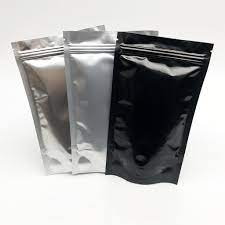Caulking may seem like a minor aspect of home maintenance, but it’s one that can have a major impact on the durability and integrity of your home. Whether you’re sealing windows, bathrooms, or kitchens, good caulk maintenance ensures that your seals remain strong and effective. This blog post will guide you through everything you need to know about maintaining your caulkto keep it in top condition.
What is Caulk and Why is it Important?
Caulk is a flexible material used to seal gaps and joints in various structures. It’s typically made from silicone, latex, or polyurethane, and it helps prevent water, air, and pests from entering unintended areas. Properly applied caulk can extend the life of your home’s structural elements by preventing moisture damage and improving energy efficiency.
Signs That Your Caulk Needs Attention
One of the first steps in caulk maintenance is recognizing when your caulk needs attention. Look for visible cracks or gaps in the caulk lines, discoloration, or mold growth. If you notice drafts around your windows or a musty smell in the bathroom, it could be a sign that your caulk is compromised and needs replacing.
Tools You’ll Need for Caulk Maintenance
Before you start any caulk maintenance project, gather the essential tools. You’ll need a caulking gun, utility knife, painter’s tape, caulk remover, and a smoothing tool. Having these items on hand will make the process smoother and more efficient.
How to Remove Old Caulk
Removing old caulk is the first step in renewing your seals. Use a caulk remover to soften the old material, making it easier to scrape off with a utility knife. Be gentle to avoid damaging the surfaces around the caulk line.
Choosing the Right Caulk for the Job
Not all caulks are created equal. For areas exposed to moisture, such as bathrooms and kitchens, silicone caulk is the best choice due to its water-resistant properties. For exterior applications, choose a caulk that can withstand UV rays and temperature fluctuations.
Preparing Surfaces for New Caulk
Before applying new caulk, ensure that the surfaces are clean and dry. Use a mild detergent to remove any dirt or grease, and allow the area to dry completely. This will help the new caulk adhere better and last longer.
Applying New Caulk
Cut the tip of the caulk tube at a 45-degree angle, and load it into the caulking gun. Apply even pressure to create a smooth, continuous caulk line. Use a smoothing tool or your finger to press the caulk into the joint and remove any excess material.
Creating Smooth and Even Caulk Lines
Achieving smooth and even caulk lines is essential for both aesthetics and effectiveness. Lay painter’s tape along the edges of the joint before applying the caulk. This will help you create clean lines and prevent excess caulk from spreading.
Allowing Caulk to Cure Properly
Curing time for caulk varies depending on the type and brand. Silicone caulk generally takes 24 hours to cure fully, while some fast-drying latex caulks can be ready in as little as 30 minutes. Check the manufacturer’s instructions and avoid exposing the caulk to water or extreme temperatures during the curing process.
Regular Inspection and Touch-Ups
Regular inspection is key to maintaining your caulk. Check your seals every few months and look for any signs of wear or damage. Small cracks or gaps can be easily fixed with a touch-up application, ensuring that minor issues don’t become major problems.
Preventing Mold and Mildew on Caulk
Mold and mildew can compromise the integrity of your caulk and create health hazards. To prevent mold growth, ensure proper ventilation in areas prone to moisture, such as bathrooms. Use a mildew-resistant caulk in these areas, and clean the surfaces regularly with a mold-killing cleaner.
Energy Efficiency and Caulk Maintenance
Properly maintained caulk can improve your home’s energy efficiency by sealing drafts around windows and doors. This helps keep your home warm in the winter and cool in the summer, reducing your energy bills and increasing your comfort.
When to Call a Professional
While many caulk maintenance tasks can be done by homeowners, there are times when it’s best to call a professional. If you’re dealing with extensive water damage, complicated joints, or areas that are difficult to access, a professional can ensure the job is done correctly and safely.
Conclusion
Caulk maintenance is an essential aspect of home upkeep that can save you time, money, and headaches in the long run. By regularly inspecting your seals, using the right materials, and applying caulk correctly, you can keep your home in top condition. For those who need extra help or guidance, consider booking a consultation with a professional caulking service to ensure your home remains protected.
By taking these steps, you can extend the life of your caulk and keep your home safe, energy-efficient, and looking great. Remember, the key to durable seals is consistent care and attention. Happy caulking!


